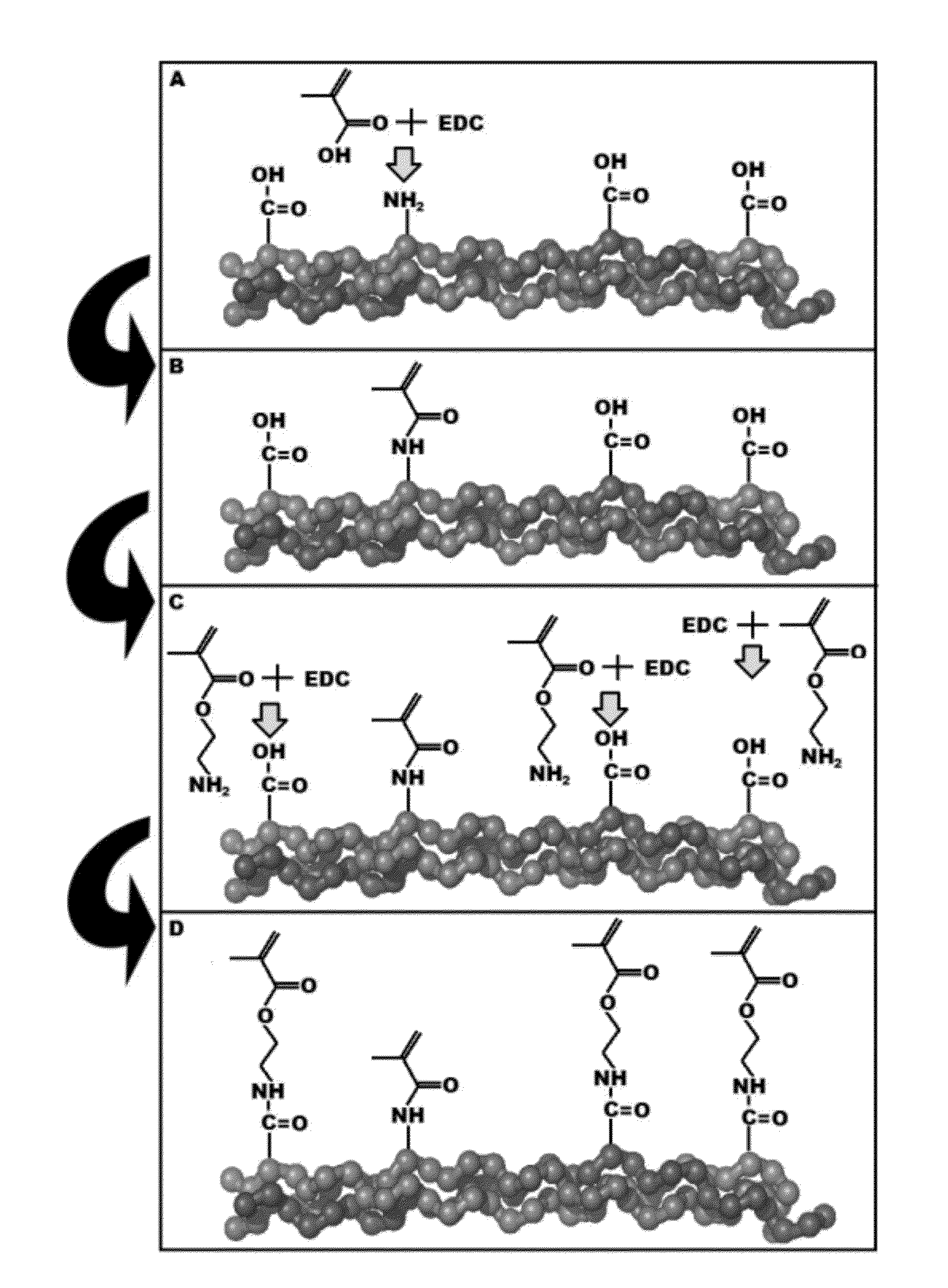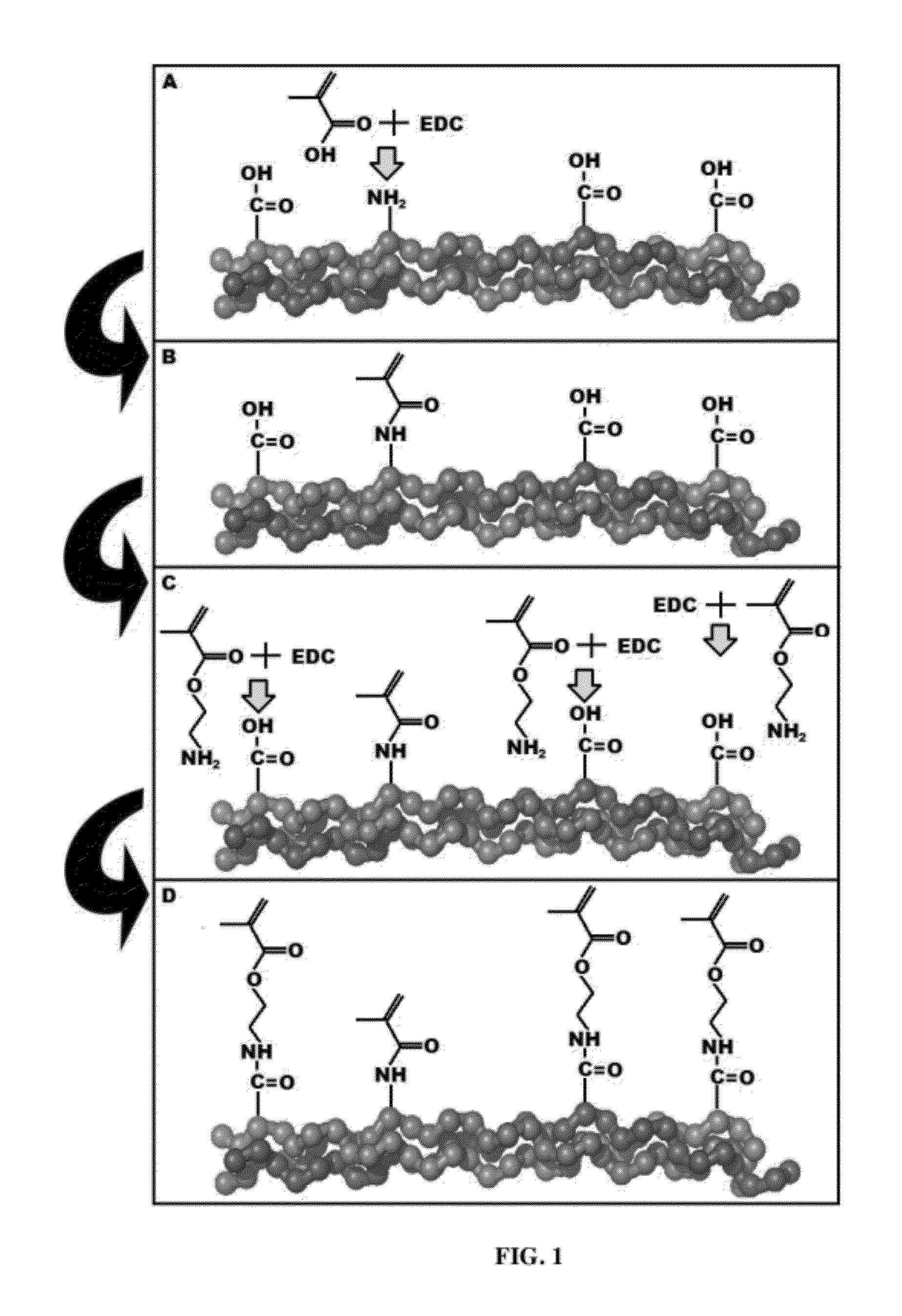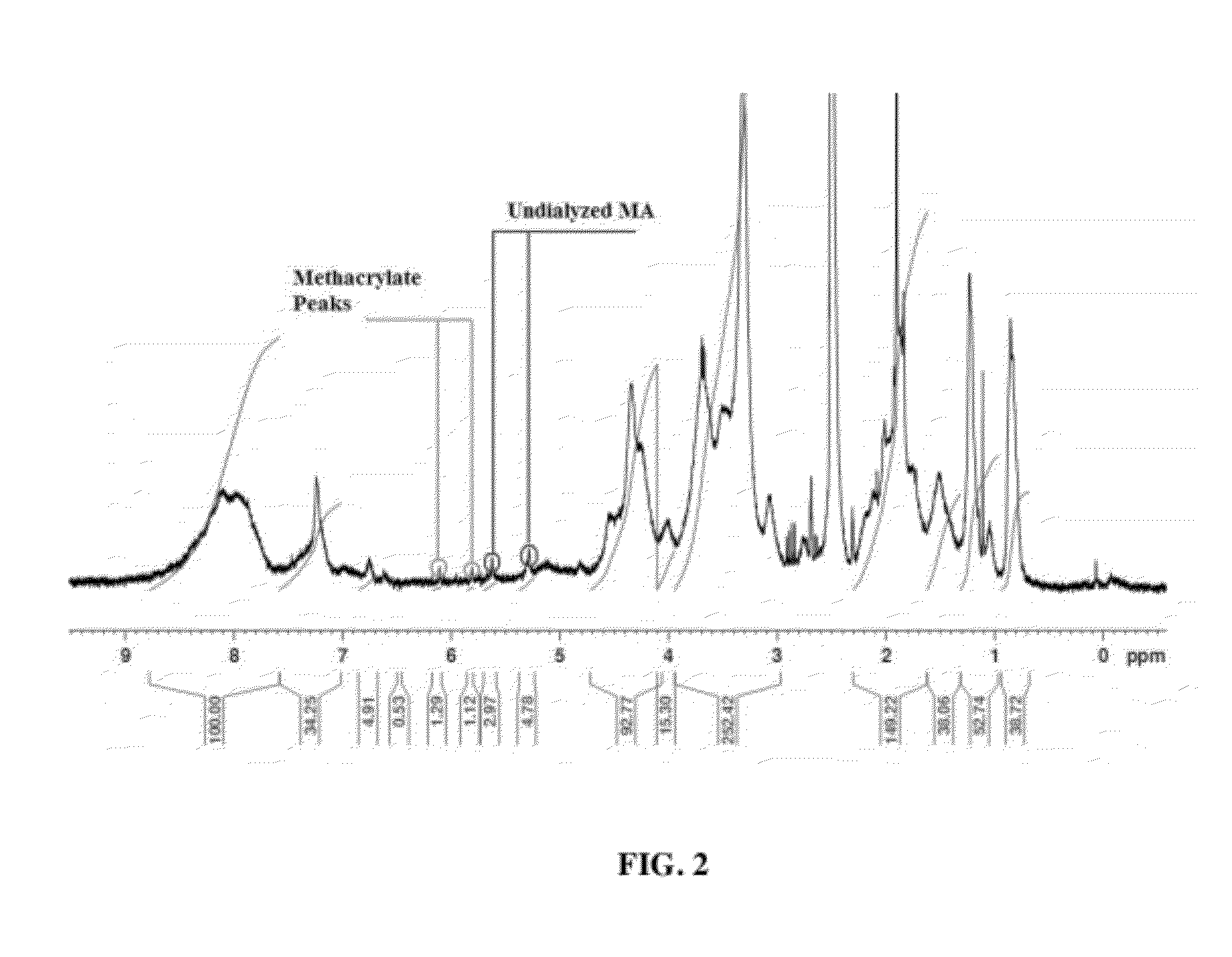Process for the synthesis of methacrylate-derivatized type-1 collagen and derivatives thereof
a technology of collagen and methacrylate, which is applied in the field of synthesis of methacrylate-derivatized type 1 collagen and derivatives thereof, can solve the problems of limited control of mechanical properties of natural materials such as collagen, more difficult to work with from an engineering viewpoint, and difficult to achieve the effect of improving product performan
- Summary
- Abstract
- Description
- Claims
- Application Information
AI Technical Summary
Benefits of technology
Problems solved by technology
Method used
Image
Examples
example 1
Synthesis of Methacrylate-Derivatized Type-I Collagen
[0060]Type I bovine collagen was modified by replacing free amines with methacrylate groups to create collagen methacrylamide (CMA). 1-ethyl-3-(3-dimethylaminopropyl) carbodiimide) (EDC) and N-hydroxysuccinimide (NHS) in MES buffer were used to activate the carboxyl group of methacrylic acid (MA) for 10 minutes at 37° C., which was added to the collagen (3.75 mg / mL) in 0.02N acetic acid and reacted for 24 hours at 4° C. Following the reaction, the CMA was dialyzed against 0.02N acetic acid, lyophilized for 72 hours, and finally re-suspended in 0.02N acetic. Derivatization was verified using H1 NMR. NMR spectra were obtained with a Bruker Avance 360 MHz NMR Lyophilized CMA was dissolved in deuterated DMSO (10 mg / mL) overnight and NMR spectra were calibrated to the residual solvent peak (2.50 ppm). Derivatization efficiency was also evaluated using a trinitrobenzenesulfonic acid (TNBSA) assay, modified from Sheu et al to quantify th...
example 2
Optimization of the Synthesis of Methacrylate-Derivatized Type-I Collagen
[0063]An additional step for optimizing derivatization efficiency is discussed herein. The initial methacrylation step targets the free amines on collagen, of which there are approximately 164 per triple helical type-I collagen molecule consisting of two a chains and one β chain. While this number of potential grafting sites is large enough to allow a functional modification of collagen, when more methacrylate groups are be added, the CMA is a more robust material in terms of the range of material properties achieved through photocrosslinking.
[0064]Another site of potentially graftable residues is on the carboxyl group present on the amino acids glutamate and aspartate, of which there are a combined 387 per triple helical collagen molecule. After the free amines on collagen have been converted into methacrylamides, a second round of EDC functionalization targeting the free carboxyls is done to prevent the colla...
example 3
Characterization of Mechanical Properties of Hybrid Hydrogels
[0065]UV rheometry was used to evaluate changes in bulk mechanical properties of collagen gels as a result of methacrylation and UV-mediated crosslinking. Currently, a repeatable methodology for performing rheometry experiments on CMA, CMAx2 and native collagen hydrogel samples has been developed and implemented.
[0066]To evaluate the changes in mechanical properties, CMA was mixed in 1 mL batches, in which 677 μL CMA (3.75 mg / mL) was added to 20 μL HEPES, 140-μL 0.15N NaOH, 100 μL 10×PBS, 53 μL PBS, and 10 μL of a photoinitiator solution containing 2.5% (w / v) Irgacure 2959 (I2959) in methanol. This collagen solution was immediately loaded between a 20 mm top parallel plate and a quartz lower plate on a modified Kinexus Ultra rotational rheometer (Malvern Instruments). The temperature was raised to 37° C. with a Peltier-controlled stage to induce fibrillogenesis. After 10 mins. the sample was exposed to UV light (365 nm, 10...
PUM
| Property | Measurement | Unit |
|---|---|---|
| diameter distribution | aaaaa | aaaaa |
| concentration | aaaaa | aaaaa |
| concentration | aaaaa | aaaaa |
Abstract
Description
Claims
Application Information
 Login to View More
Login to View More - R&D
- Intellectual Property
- Life Sciences
- Materials
- Tech Scout
- Unparalleled Data Quality
- Higher Quality Content
- 60% Fewer Hallucinations
Browse by: Latest US Patents, China's latest patents, Technical Efficacy Thesaurus, Application Domain, Technology Topic, Popular Technical Reports.
© 2025 PatSnap. All rights reserved.Legal|Privacy policy|Modern Slavery Act Transparency Statement|Sitemap|About US| Contact US: help@patsnap.com



